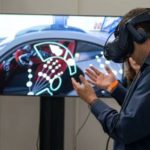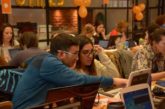Introduction
Virtual Reality , VR in short is a very advanced technology, which is an integration of computer science, robotics, instrumentation, multimedia, sensors, optics, 3-D technology, etc. Each technology, which converges to form VR, in itself, is very sophisticated and hi-tech. VR is a powerful user interface technology. This current technology doesn’t even require physical presence of a person. Information is important and this promising technology provides the best way to visualize it, enabling directly interaction for the user.
VR has full-blown applications in industries like automobile and aviation. Its implementations are now being expanded to fields like education and medicine. In education, Mutual Telexistence (convergence of VR and robotics), Virtual Rooms and Distributed VR have emerged. In medicine, very advanced softwares have been developed to treat growing number of painful procedures. Some of the examples include:
a. Wound care of burn patients
b. Endoscopic therapy after Single Event Multilevel Surgery (SEMLS) for cerebral palsy
c. Dental pain and anxiety
d. Pain/anxiety during injections
e. Overcome phobias like spider phobias
f. Treat various anxiety disorders like Post-traumatic Stress Disorder (PTSD)
g. In artificial limb development
Virtual Environments (VE) for education have been discussed in various ways. While advanced multi-user educational VEs are still a speculation, simpler VEs based on standard technologies have been in existence for some time.
For distance education purposes, distributed VR is useful. Virtual Reality system can be networked to support multiple-user immersion environments joined over long distances. The sites implementing VR technology must be networked using low band modem-to-modem over telephone lines, the Internet, and high bandwidth telecommunications. The emergence of the Virtual Reality Modeling Language (VRML) as a standard method of modeling virtual reality objects and worlds coupled with the wide spread deployment of WWW browsers that support VRML allows the creation of such distributed virtual environments, which can be accessed through Internet. This paves the way for participation of more geographically dispersed users in multi-user virtual reality interface systems.
Applications of VR
The fields in which VR has been implemented are summarized below-
Education and conferencing.
Civilian and military training simulators.
Business and scientific visualization.
Architecture, design, prototyping (Research and Industry).
Art and leisure.
Surgery and rehabilitation.
Telexistence, tele-immersion and Immersive 3D virtual environments (IVR).
SnowWorld, SpiderWorld, ChocolateWorld, SuperSnowWorld.
VR in Education
Virtual Reality technology offers educators a truly new and innovative way to teach and engage students. It is a cutting-edge technology that allows students to step through the computer screen into a 3D interactive environment. Using a special headset and glove, it places students inside of a simulated virtual environment that looks and feels like the real world. Integrating virtual reality into everyday learning has revolutionized teaching and learning processes.
A helpful analogy to better understand the nature of the virtual environment is that of a student exploring a forest for the first time. A student will best learn about the forest not from reading about it or listening to someone talk about it, but by walking into it – becoming a part of it. The student is free to explore the forest any way he/she likes. The biology class where students are learning cell structure is supplemented by a trip to the Virtual Reality Lab where students enter and explore a human cell. Discovery and experience become the best teacher.
Virtual reality is created by an impressive, exciting technology that engages the student. It draws its power from three principles: visual, experiential, and self-directed learning, the most effective ways to teach students. Virtual reality allows students to be fully involved in their education, instead of merely passive observers, focusing first and foremost on the learning needs of students. The age-old problem educators face is how to better involve students in their studies. Traditional teaching methods have sometimes not been effective in the goal of seizing students attention, relegating students to a passive role in the classroom.
Understanding virtual reality-based learning means understanding the shift from text-based education to multi-sensory, experiential learning. Virtual reality copies the way people have always learned – by interacting with the world. It allows hands-on activities to facilitate active learning.
I hear and I forget. I see and I understand. I do and I remember , said Confucius, the wise Chinese Philosopher. Thus, Learning is most effective when it is an active discovery process and realistic learning is more effective as a learning device. VR is learning without boundaries.
Steve
Virtual Reality can bring simulation-based learning environments closer to real-life experience. Instead of watching the simulated world through a desktop window, students are immersed in a 3D computer simulation of their work environment, where they can improve their skills through practice on realistic tasks. VR simulation environments are essentially valuable in domains where real life training is expensive or hazardous such as surgery, air combat and control of complex equipment. In addition using networked virtual reality systems, multiple students (possible at different work sites) can learn to perform collaborative or competitive tasks together.
Immersive virtual environments also allow the computer tutor to inhabit the virtual world with the student. To explore the use of intelligent tutoring systems in virtual reality, a pedagogical agent , Steve (Soar Training Expert for Virtual Environments) has been developed which physically collaborates with students, enabling new types of interaction.
Steve s Capabilities
Each student s interface to the virtual world is provided by special-purpose hardware and Lockheed Martin s Vista Viewer software. Students get a 3D immersive view of the world through a head-mounted display (HMD). Vista uses data from a position and orientation sensor on the HMD to update the student s view as they move around. Students interact with the virtual world using a 3D mouse or data gloves. Sensors on the mouse and gloves keep track of the student s hands, and Vista software sends out messages when the student touches virtual objects. These messages are received and handled by the RIDES software which controls the behaviour of the virtual world.
Steve requires two capabilities Steve must be able to demonstrate and explain tasks, and he must be able to monitor students performing tasks, providing assistance when needed. When demonstrating, Steve performs and explains each step of the task. Steve is currently represented by a head and a hand that can manipulate and point at objects.
Steve inhabits the virtual world along with students. To provide a collaborative style of interaction with the student, Steve can gracefully shift between demonstrating a task and monitoring the student s performance of the task. During Steve s demonstrations, the student can interrupt and ask to finish the task, in which case Steve shifts to monitoring. When monitoring a student, the student can always ask Steve to demonstrate a recommended action. Thus, VR supports a natural and flexible collaboration between student and tutor.
Distributed VR and VRML
The idea behind distributed VR is very simple; a simulated world runs not on one computer system, but on several. The computers are connected over a network (possibly the global Internet) and people using those computers are able to interact in real time, sharing the same virtual world. In theory, people may be stationed anywhere in world at different locations, all interacting in a meaningful way in VR. There may be a number of obstacles in establishing such type of an environment, like limited-bandwidth links, latency in delivery of update information and heterogeneous platforms.
The environment in which a distributed VR user is immersed is three-dimensional to the eye and ear. Moving in the environment changes the user s visual and auditory perspective. Unlike a video conferencing system (where an attendee s screen shows other attendees in their own videoconferencing rooms), distributed VR users assemble in a virtual world – they are all seen, for example, seated together around a conference table in one room, or walking together in a virtual building. Every user of a distributed VR appears in the computer environment as an avatar – either a customized graphical representation, a video of the user, or some combination of both – which he or she controls. The user, besides interacting with one another, also deals with one or more computer simulations.
This idea of distributed VR can possibly be implemented using the Virtual Reality Modeling Language (VRML) that aims to aid Internet with 3D spaces. These 3D spaces in VRML are known as worlds. These worlds can be environments or single objects with the file suffix as.wrl. VRML defines a set of objects and functions for modeling simple 3D graphics. These are known as nodes, which are arranged in hierarchies called scene graphs. There is a top-down arrangement in which nodes that are described earlier in a scene affect later ones, but this can be limited by the use of separator nodes. A VRML file is an ASCII file which is interpreted by the browser and converted into a 3D display of the described world. VRML is designed to fit into the existing infrastructure of the Internet and the WWW. It uses existing standards wherever possible, even if those standards have some shortcomings when used with VRML.
In one of the versions of VRML, also known as Moving Worlds, either object in the world can act and react to each other under program control, or they can respond to the user s actions in some way. The features that Moving Worlds currently include are:
I. International character sets for text can be displayed using UTF-8 encoding
ii. A set of new nodes has been added to increase the realism in models that are intended to represent the outdoor world around
iii. Sound generating nodes will also enhance the sense of realism
iv. New sensor nodes will set off certain events when one enters specific areas, or click on certain objects. So, for example, as the viewer approaches an object it can be triggered to start some action or make a noise
v. Collision detection ensures that objects can act as if solid. That is, the user, will not go through walls and floors
vi. Script nodes allow for the animation of objects in the world and the interaction of the world with other applications, for example databases
vii. Multi-user environments. There are many approaches to creating multi-user worlds, and the Moving Worlds aims to provide the functionality required for these, but without dictating which approach is to be used
Virtual Environment based on distributed VR
All the concepts of VR technology highlighted above can be combined in an effective manner to create a virtual environment, just like Steve s room on top of a network. Concept can be implemented on an intranet; and using VRML as the remedial technology along with the existing standards for Internet and World Wide Web it can be further extended to operate in a globalized environment like Internet. VRML produces a hyperspace (or a world), a 3-dimensional space that appears on the display screen. Users can figuratively move within this space by pressing keys to turn left, right, up or down, or go forwards or backwards. The images on the screen will change to create a feel of actual movement through a real space.
The user must access the remote VR server and select the service they require. The remote server then downloads the necessary executable code into the local server from where the student can interact with the virtual environment. It is envisaged that the future educational establishments will want to make their VR based educational programmes available to others. Anyone with appropriate hardware will be able to access these systems for a subscription fee. The main advantage of this approach is that organizations will be able to access appropriate VR based educational material without having to develop material themselves. It is highly likely that it will be possible to gain access to a very wide variety of educational material in this manner. However, there are a number of issues such as copyright and how much capability will be required in the local system.
Conclusion
Within the higher education community there has been an increase in the use of information technology such as multi-media with considerable success. Multi-media based systems provide the student with a very rich source of educational material in a form that makes learning exciting. VR has extremely wide application across a whole range of disciplines and the enabling technology has reached a sufficient level of maturity for it to be seriously applied to education, training and research in higher education. The costs associated with a VR system have been prohibitive for educational establishments (this is still true for fully immersive VR systems) but recent technological developments in computer hardware and software now make it feasible to look at VR as an important aid.
Though VR technology proves to be excellent in any field, yet it is not very popular. The reason being that fully immersive VR setup is still very expensive. The prohibitive costs and inaccessibility of VR technologies, coupled with issues of usability, educator training, operation and maintenance, present important drawbacks for the educational use of VR making it difficult to incorporate in dwindling educational budgets. In spite of these concerns and objections regarding the appropriateness and educational efficacy of virtual reality, there remain compelling reasons for believing that VR learning environments for students warrant serious investigation and can provide strong tools for learning.







